Nvidia GeForce GTX 1080 Ti Review
Nvidia'southward Pascal architecture marked a new milestone for PC graphics last year, with graphics fries that were considerably faster and more efficient than earlier, driving polish frame rates at 4K resolutions, delivering very fast graphics on laptops, and doing so at a price that at the time we found more than justified.
AMD answered with new Polaris GPUs, an impressive family of new Radeon chips that brought great mainstream solutions that about gamers could afford. We recommended (and still recommend) some of the latest Radeons at certain price points, all the same unable to compete at the very loftier-end, AMD offerings failed to generate quite the same corporeality of buzz equally Nvidia'due south.
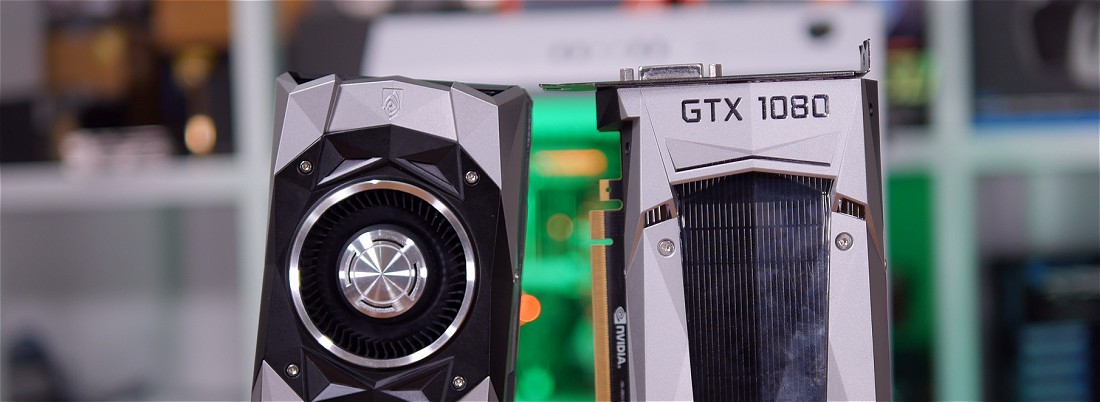
You might recollect, we awarded the GeForce GTX 1080 our first ever perfect score which was met with controversy. But to exist clear, that score was awarded to the GTX 1080 GPU and not the Founders Edition carte du jour sold directly by Nvidia which nosotros noted at the time carried an unfortunate toll premium.
The flagship GTX 1080 was followed by the GTX 1070, 1060, Titan X, GTX 1050 Ti and GTX 1050. This had Pascal covering cost ranges from $110 all the fashion upwardly to an eye watering $1200.
The jump from the $700 GTX 1080 to the $1200 Titan X was the largest price gap in the series, and then it made sense that if Nvidia was to release another part that would sideslip in there. For over a month nosotros've been expecting a cutting downwardly version of the Titan X for somewhere between $700 and $yard, depending on how much gets shaved off. We had assumed Nvidia would simply shut off one or 2 SM units and telephone call it a day.
However, last week we learned that the GTX 1080 Ti was going to be different than what everyone expected. Instead of a cut down Titan Ten nosotros're getting a full 3584 CUDA cadre enabled GP102 GPU. A few ROPs accept gone missing which has had a knock on result for the memory subsystem which sees a retention coach being used. Nvidia has come up with a workaround for this which we volition become to presently.
For now, let'due south take a closer await at the GTX 1080 Ti Founders Edition graphics card…
GeForce GTX 1080 Ti Specs
Because the GTX 1080 Ti is based on the aforementioned GP102 die as the Titan X, we do notice an 8-pin as well equally a 6-pin PCIe power connector. Other than that, out of the box, the cards expect very much the same.

Under the hood you lot will notice a total 3584 CUDA core enabled GP102 GPU made upwards of an incredible 12 billion transistors. In that location are also 224 texture units though the ROPs have been reduced by 8%, from 96 to a rather odd 88. This sees the 12GB buffer of the Titan X reduced to 11 GBs, again some other odd number. Once once more GDDR5X retentivity is beingness used and it operates at an incredible frequency of 2750 MHz.
Nvidia says they have been working closely with Micron to improve the signal noise and jitter of their high speed GDDR5X memory. The improvements have allowed Nvidia to hit 11 Gbps on the memory which is faster than the 10 Gbps retentiveness speed of the Titan Ten and GTX 1080.

The superlative compute throughput of the GTX 1080 Ti is also slightly higher than the Titan Ten due to the Ti's higher Boost clock and retentiveness bandwidth. Although the Ti features a narrower 352-bit memory passenger vehicle, the higher clocked GDDR5X retention is able to compensate. The end result is an impressive memory bandwidth of 484 GB/s. That's not far off the performance of get-go generation HBM.
Officially, Nvidia is claiming that the GTX 1080 Ti will exist roughly twenty to 40% faster than the vanilla 1080, given the specs that certainly sounds correct. Impressively, the 1080 Ti features the same 250-watt TDP rating as the 980 Ti. It also manages to cram more transistors in a smaller die area of just 471mm2, some 20% smaller for fifty% more than transistors.
GTX 1080 Ti Off-white Toll Edition
With the card on hand, I can say it looks almost identical to the GTX 1080 and 1070, and I love the look of these Founders Edition cards. Of course, there's the little Ti nomenclature tacked onto the end of the GTX 1080 characterization which looks a bit special, even if information technology isn't correctly centered -- this one messed with my OCD.
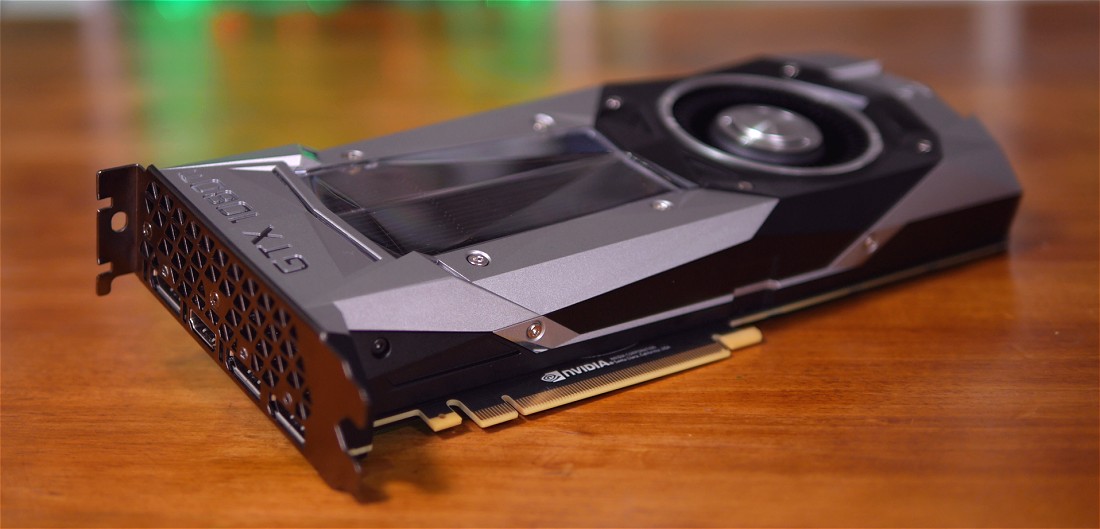
Nvidia likewise says that the 1080 Ti features improved cooling performance that volition provide lower temps while making less noise, so that'southward a win win. For those wondering the Ti model weighs 1041 grams while the original 1080 tips the scales at 1029 grams.

The housing of the GeForce GTX 1080 Ti Founders Edition features a die cast aluminum body and includes a depression-profile backplate with a removable department. This removable department is useful when ii GeForce GTX 1080 Ti cards are paired directly adjacent to each other in an SLI system, where the lower bill of fare receives less airflow due to the other carte du jour being placed directly above it. By removing a portion of the backplate, the obstruction is reduced, which helps to improve airflow.
A copper vapor bedroom is used to cool the GTX 1080 Ti'south GP102 GPU. This vapor chamber is combined with a large, dual-slot aluminium heatsink to dissipate heat off the chip. A radial fan then exhausts this hot air through the back of the graphics carte and outside the PC'southward chassis.

To better the operation of the GPU cooler, Nvidia engineers have designed a new high airflow thermal solution that provides 2x the airflow area of the GeForce GTX 1080. To reach this, the DVI connector that's traditionally been placed higher up the DVI and HDMI connections on the card bracket has been removed. Instead, this area is used to provide a larger frazzle for hot air to be expelled from the GPU.
Compared to the GeForce GTX 1080 Founders Edition board, the GTX 1080 Ti's power subsystem has been essentially enhanced. If you lot recall, all GeForce GTX 10 Serial GPUs were equipped with a dual-FET power supply on both the GPU and memory, which provided cleaner power to these components compared to prior GPUs. This improved ability efficiency, reliability, and overclocking.
For the GTX 1080 Ti Founders Edition we've incorporated a seven-phase 2x dual-FET power blueprint that's capable of supplying up to 250 amps of power to the GPU.
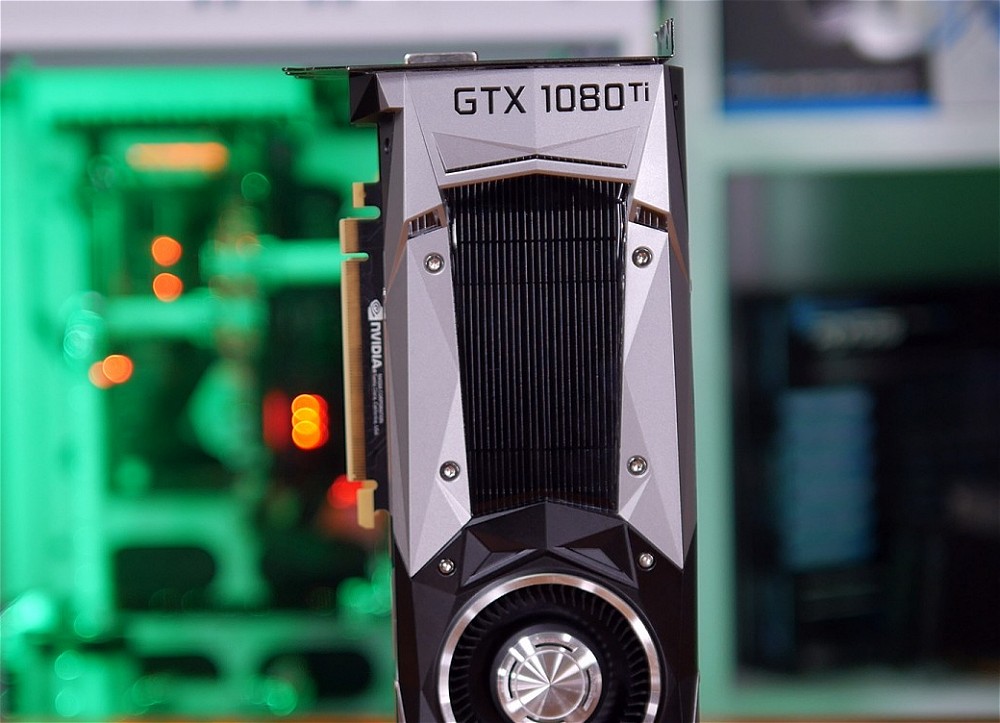
Every bit I empathise information technology just this Founders Edition menu will become available initially with custom lath partner cards to follow a week or two later. The skillful news for early on adopters is that Nvidia has dropped the ridiculous Founders Edition tax, and then this reference carte will come in at the starting price of $700. That's 42% less expensive than the Titan X which will remain at $1200.
What's more than, in an unexpected move Nvidia is cannibalizing their own product line to an extent, and then the GTX 1080'due south MSRP is dropping by $100. Taking the much loved 1080 downward to but $500. That's pretty incredible news and that 16% saving has already been passed onto consumers prior to the 1080 Ti'due south release.
Examination System Specs
- Intel Core i7-7700K @ 4.9GHz
- Asrock Z270 Gaming K6
- 32GB DDR4-3000 RAM
- Samsung SSD 850 EVO 2TB
- Nvidia Titan X (Pascal)
- Sapphire RX 460 Nitro
- Sapphire RX 460 Nitro
- MSI RX 470 GamingX 4G
- MSI RX 480 GamingX 4G
- MSI RX 480 GamingX 8G
- AMD Radeon R9 Fury X [4GB]
- Gigabyte GTX 1050 G1 Gaming
- Gigabyte GTX 1050 Ti G1 Gaming
- MSI GTX 1060 GamingX 3G
- EVGA GTX 1060 FTW+
- Gigabyte GTX 1070 G1 Gaming
- Gigabyte GTX 1080 G1 Gaming
- Nvidia GeForce GTX 1080 Ti
- Nvidia Titan XP
- Windows ten Pro 64-fleck
Benchmark Time
Gaming Benchmarks: Battlefield 1, Far Cry Primal, Civilization Half-dozen
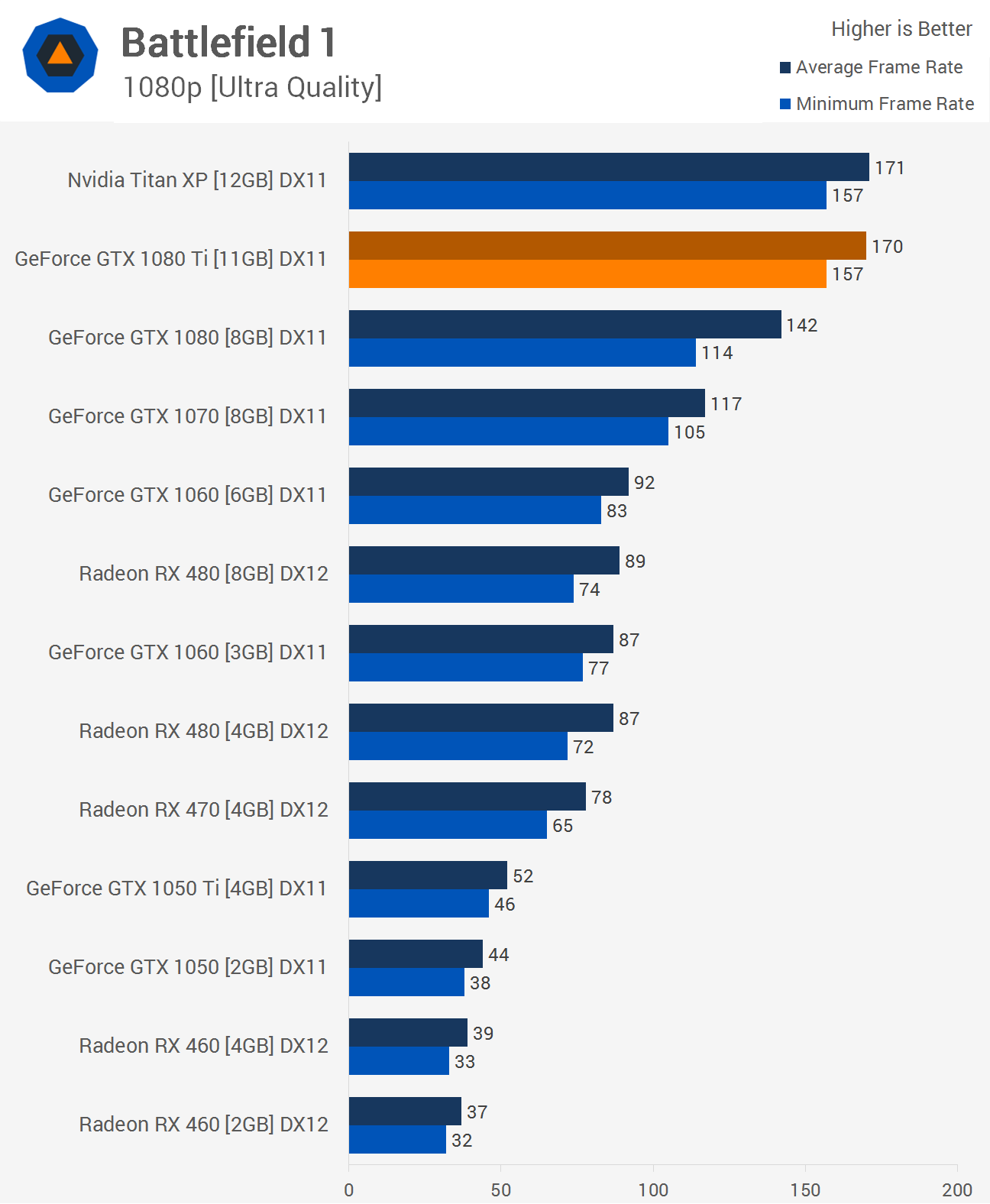

Those seeking extreme frame rates in Battlefield 1 will certainly receive them at 1080p with the 1080 Ti as it matched the functioning of the Titan XP. This was also the case at 1440p and here Nvidia'due south new flagship gaming graphics card pushed well over 100 fps at all times.

At the 4K resolution Battlefield 1 looks as abrupt every bit the edges in a generic ATX case, thankfully though with the GTX 1080 Ti in charge of the rendering work information technology's a painless experience. Here we see a smooth 75 fps boilerplate while frame rates never dipped below 66 fps. Every bit expected this again puts it roughly on par with the Titan XP, dropping just a few frames behind.
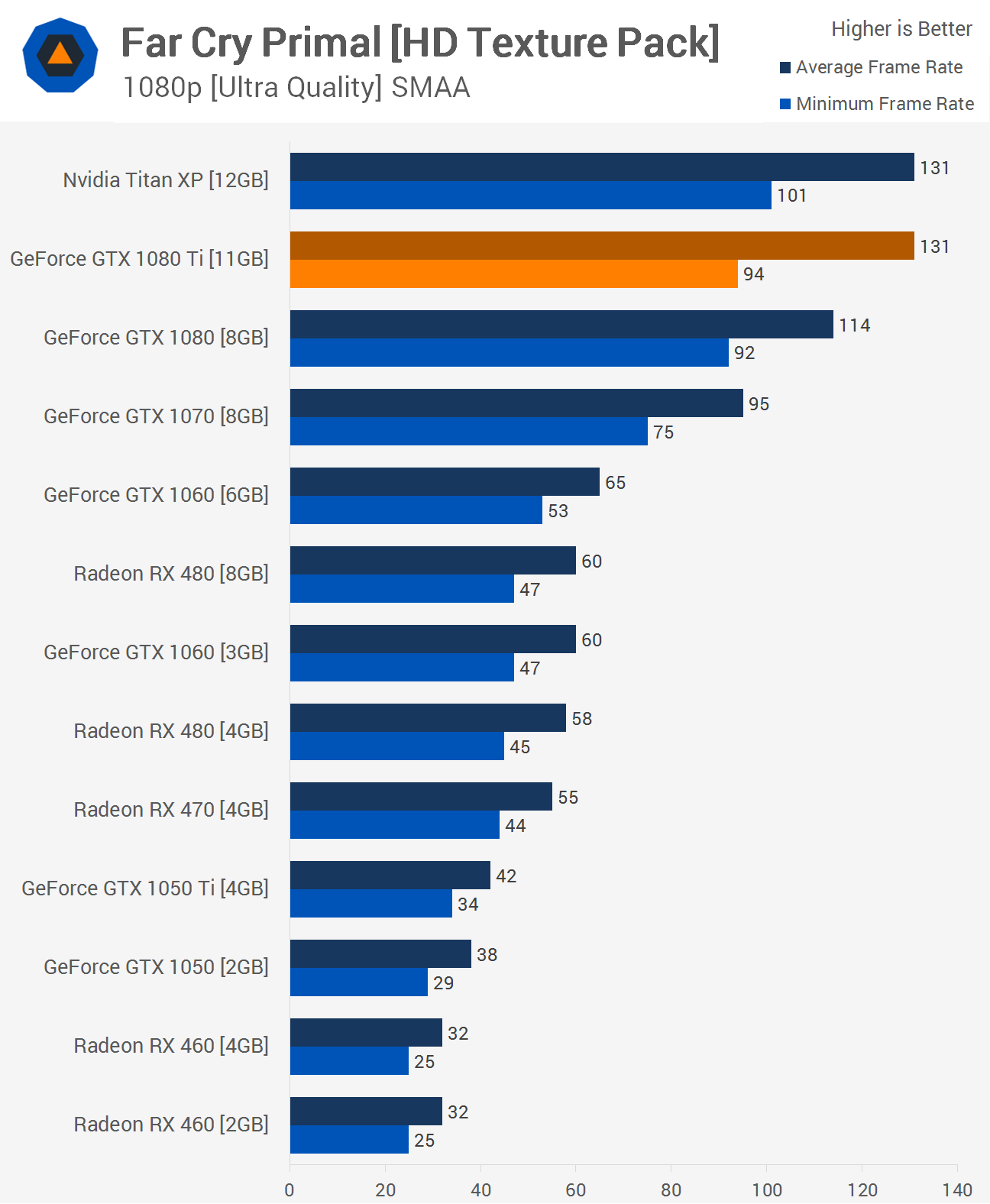

Here at 1080p we run into a rather heavy CPU clogging at 1080p. At 1440p the 1080 Ti again roughly matches the Titan XP making information technology 21% faster than the standard GTX 1080. Not a bad results given frame rates stayed above 80 fps at all times.

Moving to 4K the 1080 Ti tip toes ahead of the Titan XP though with with 2 fps in it the performance is patently very similar. Again when compared to the standard 1080 we are seeing xx% more than operation here.

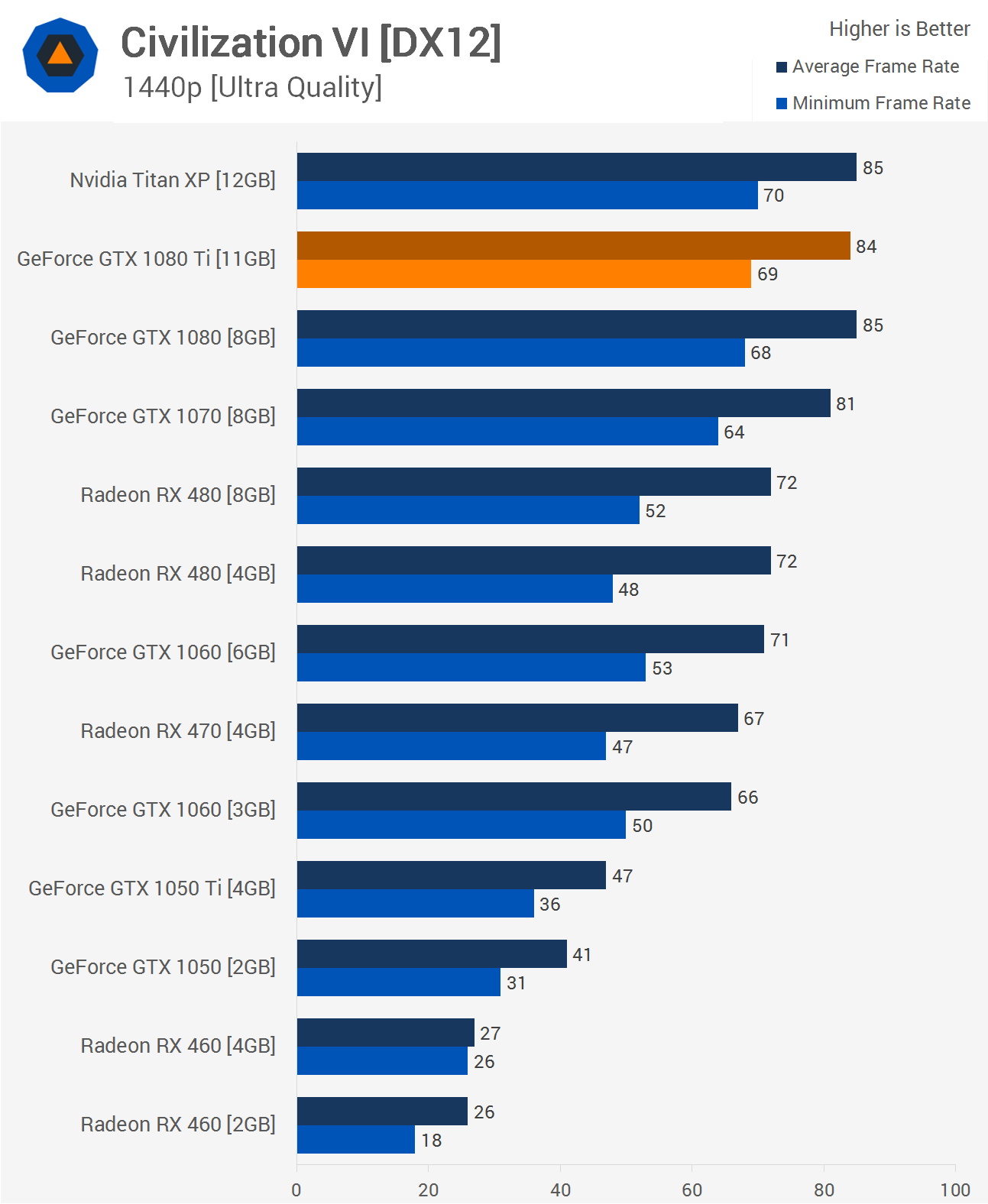
Civilization Vi is a rather CPU demanding game and is therefore quite well known for imposing a CPU bottleneck, here we run across the 1080, 1080 Ti and Titan XP capped out at 85 fps. Moving to 1440p the loftier-cease GPU'southward are however operation limited.
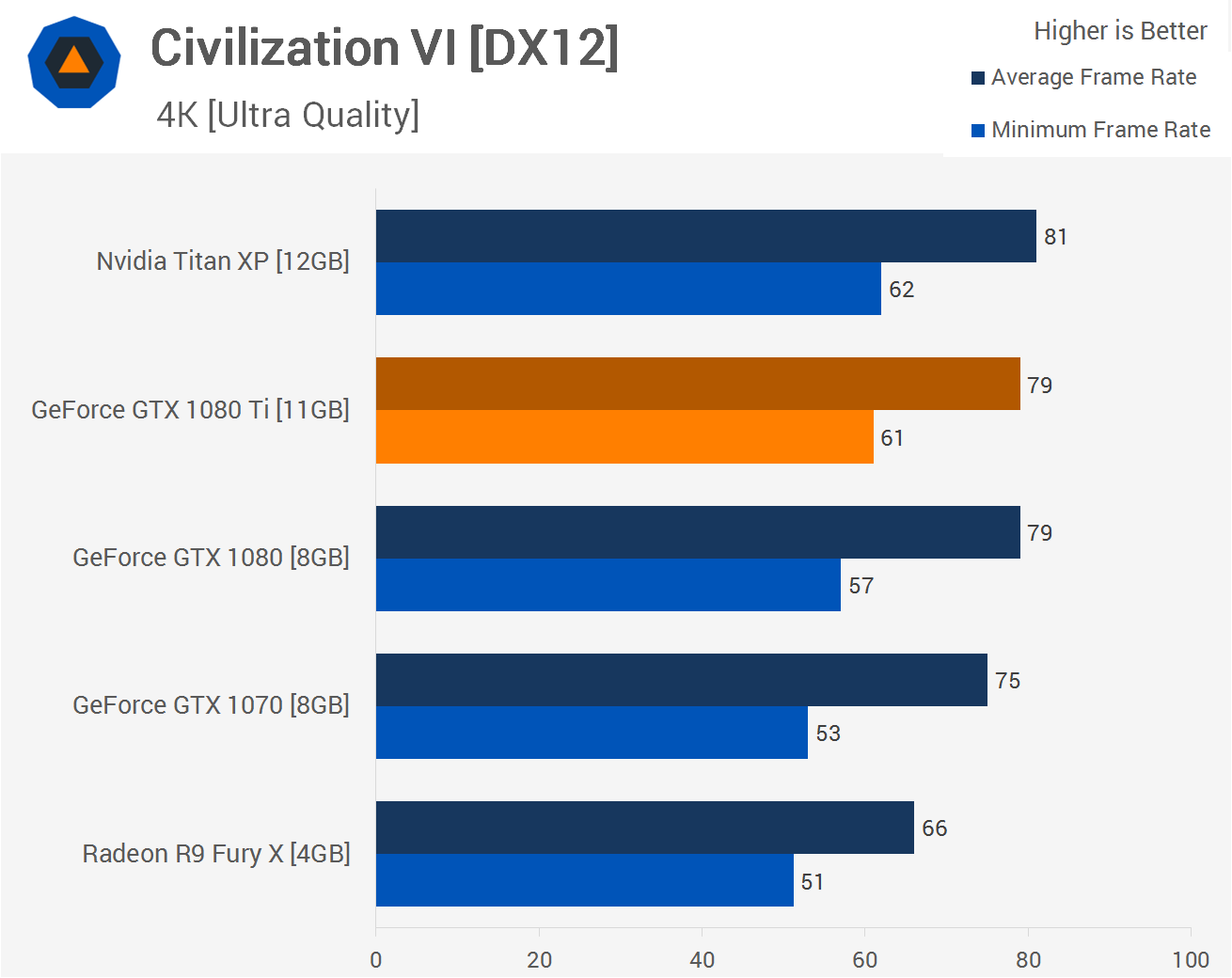
Consequence at 4K we find that the college-end GPUs all deliver very like results, the skillful news being that all cards tested are capable of delivering playable performance at this resolution.
Source: https://www.techspot.com/review/1352-nvidia-geforce-gtx-1080-ti/
Posted by: cardillovotisent.blogspot.com


0 Response to "Nvidia GeForce GTX 1080 Ti Review"
Post a Comment